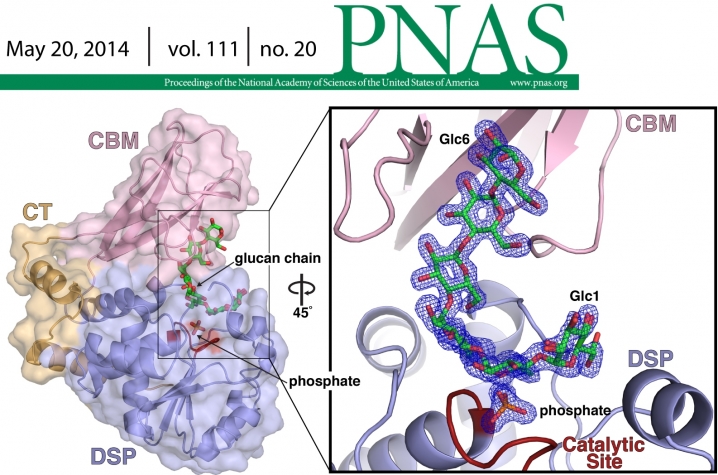UK Researchers Decode Activity of Starch Modifying Enzyme to Provide Opportunities Across Industries
LEXINGTON, Ky. (June 11, 2014) -- Scientists at the University of Kentucky College of Medicine have gained a new understanding of an enzyme essential for breaking down plant starch, a process used in agriculture, manufacturing and biotechnology.
Dr. Matthew Gentry and Dr. Craig Vander Kooi, associate professors of molecular and cellular biochemistry at the University of Kentucky, and graduate student David Meekins, have decoded the natural process plants use to break down starch. Their discovery will lead to more environmentally friendly and cost-efficient methods of processing starch, with significant applications for agriculture and biotechnology. Their findings were reported May 20 in the Proceedings of the National Academy of Sciences.
As the major energy supply in plants, starch is a central component of human and animal food. Starch is used to manufacture clothing, glue, plastics and agriculture feedstock. A growing starch demand has contributed to a drastic rise in corn prices. To be modified for industrial applications, starch requires hazardous chemicals and costly processing methods.
"Starch is a ubiquitous building block for the things in our lives," Gentry said. "The enzyme Starch Excess4 is key for starch breakdown. We envision being able to use this knowledge to make starch manipulation cheaper and more green."
Starch is comprised of long glucose, or sugar, polymers that are water-insoluble, making them ideal for storing energy but difficult to break down. The researchers decoded how a specific enzyme, Starch Excess4, controls the removal of phosphate from starch to allow efficient starch break down.
The group determined the three-dimensional structure of Starch Excess4, and this breakthrough allowed them to engineer an enzyme with novel activity. Their ability to direct the activity of the enzyme opens avenues to eliminate hazardous chemicals and costly processing methods used in the agricultural and industrial applications. The work provides a foundation for controlling starch breakdown and creating designer starches tailored to specific uses in industrial settings.
MEDIA CONTACT: Elizabeth Adams; elizabethadams@uky.edu








